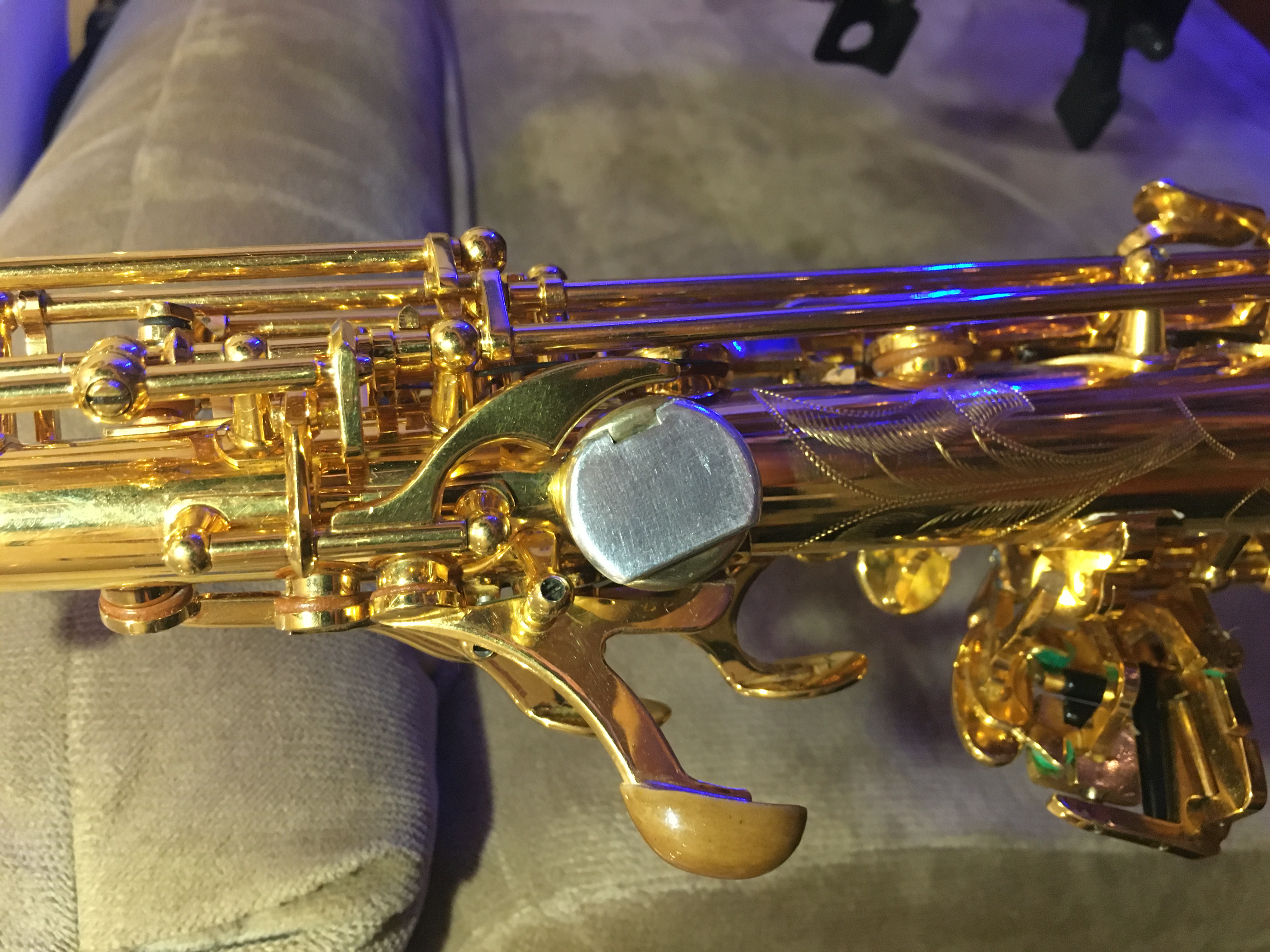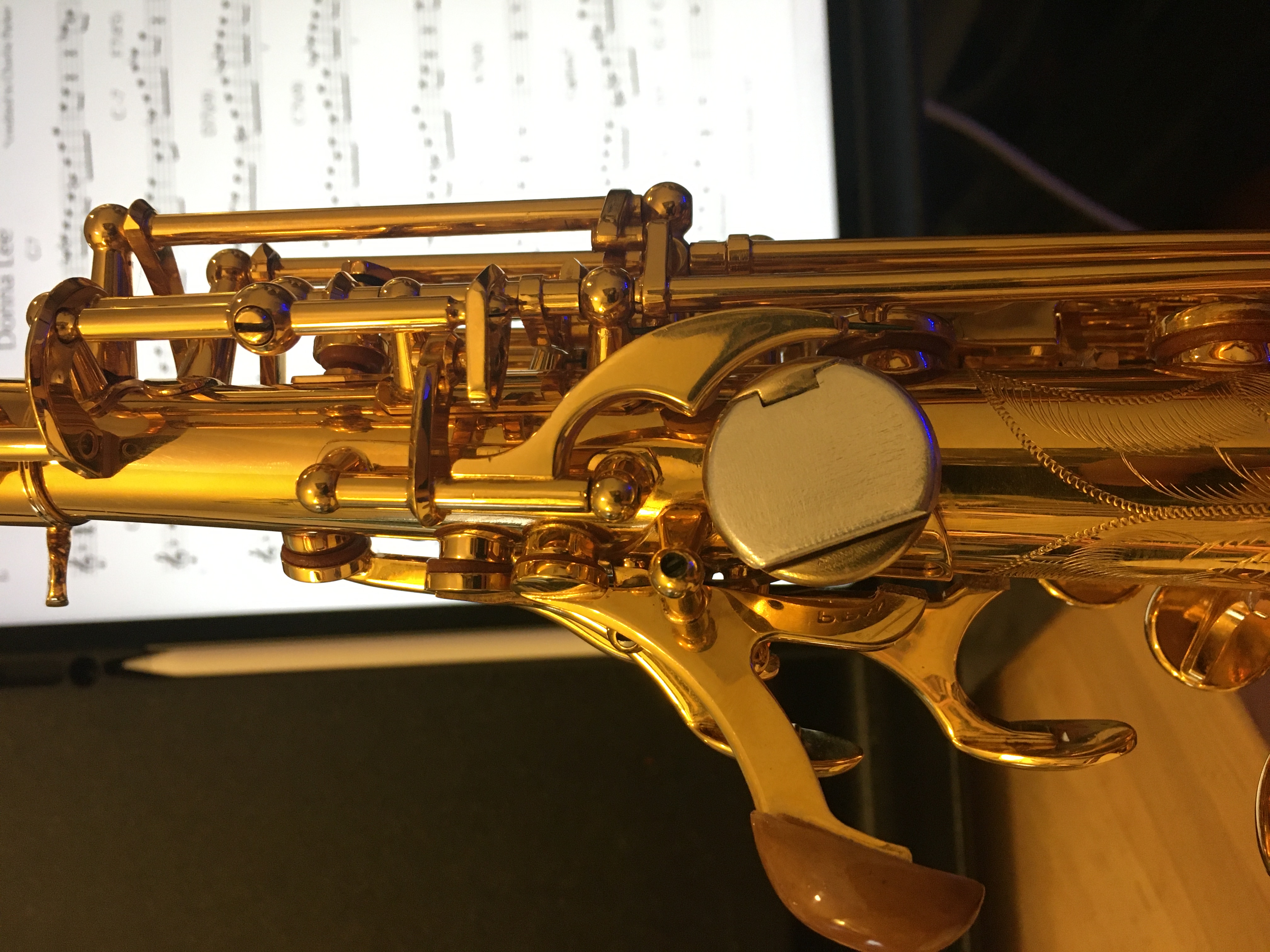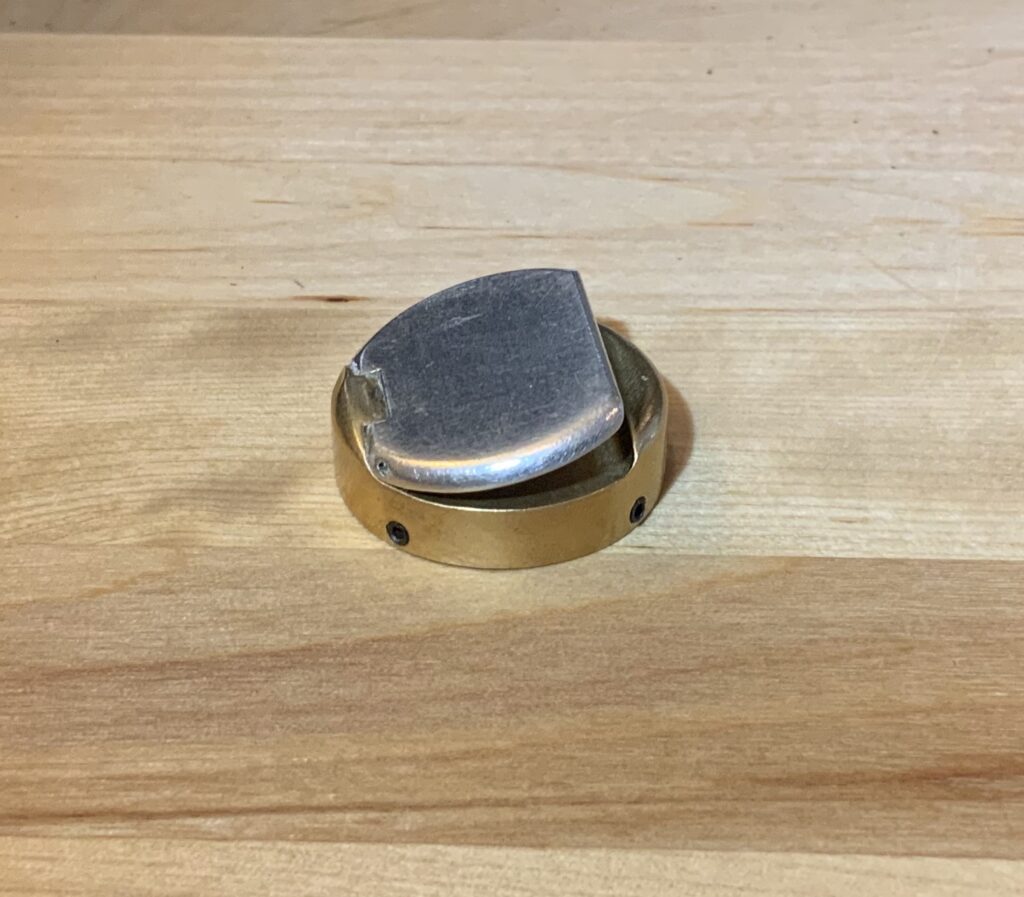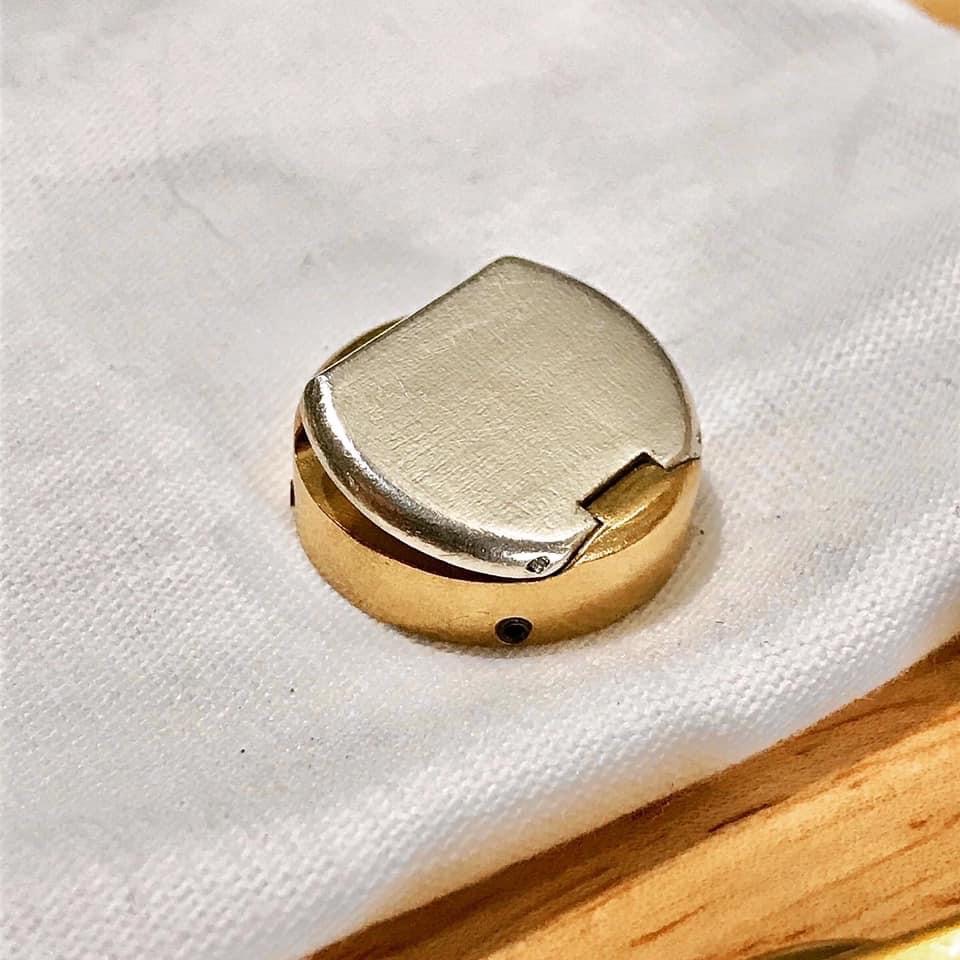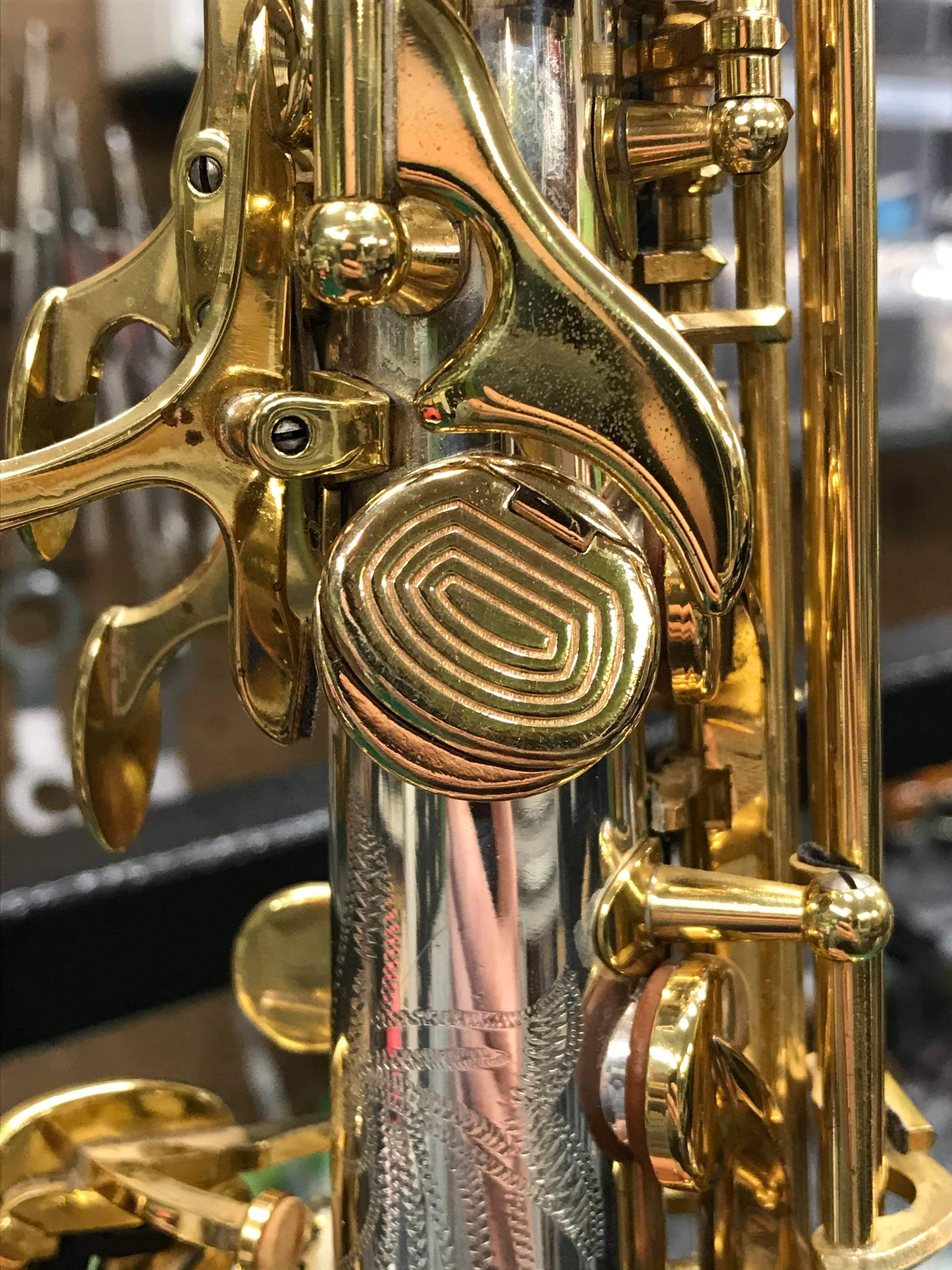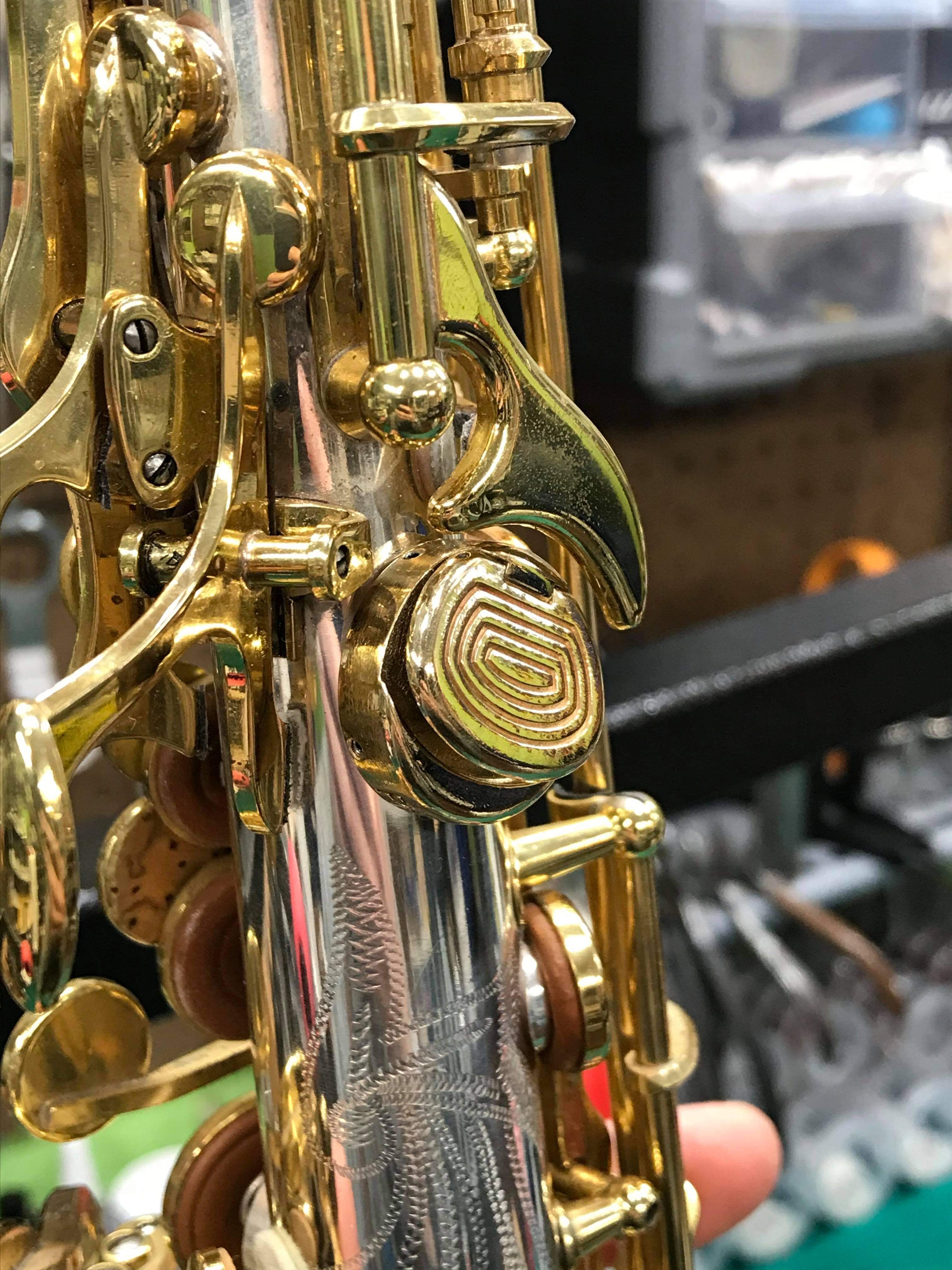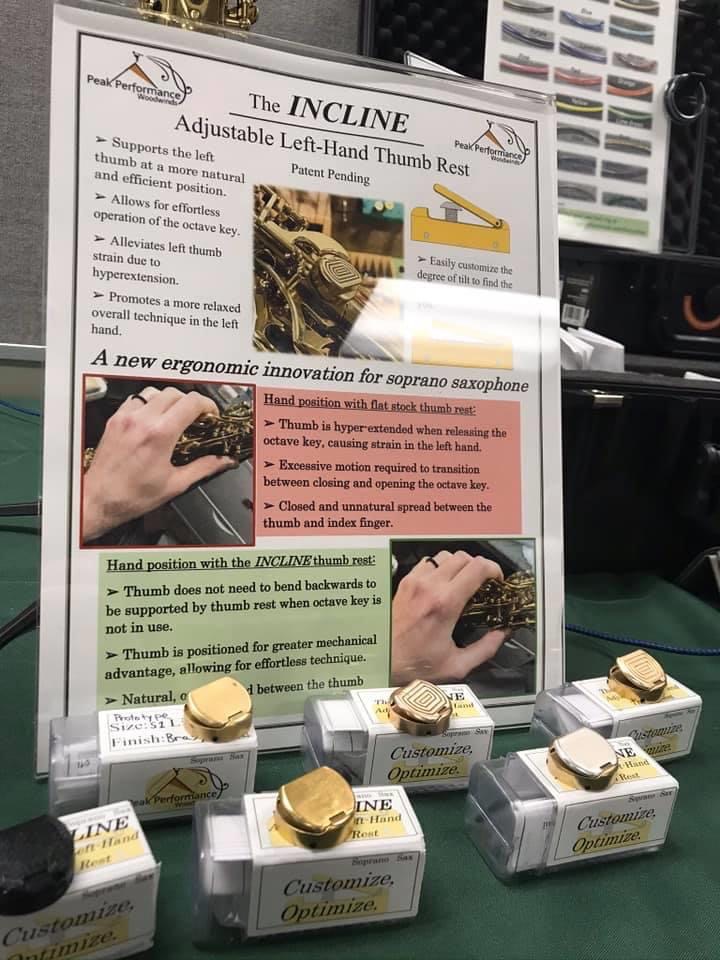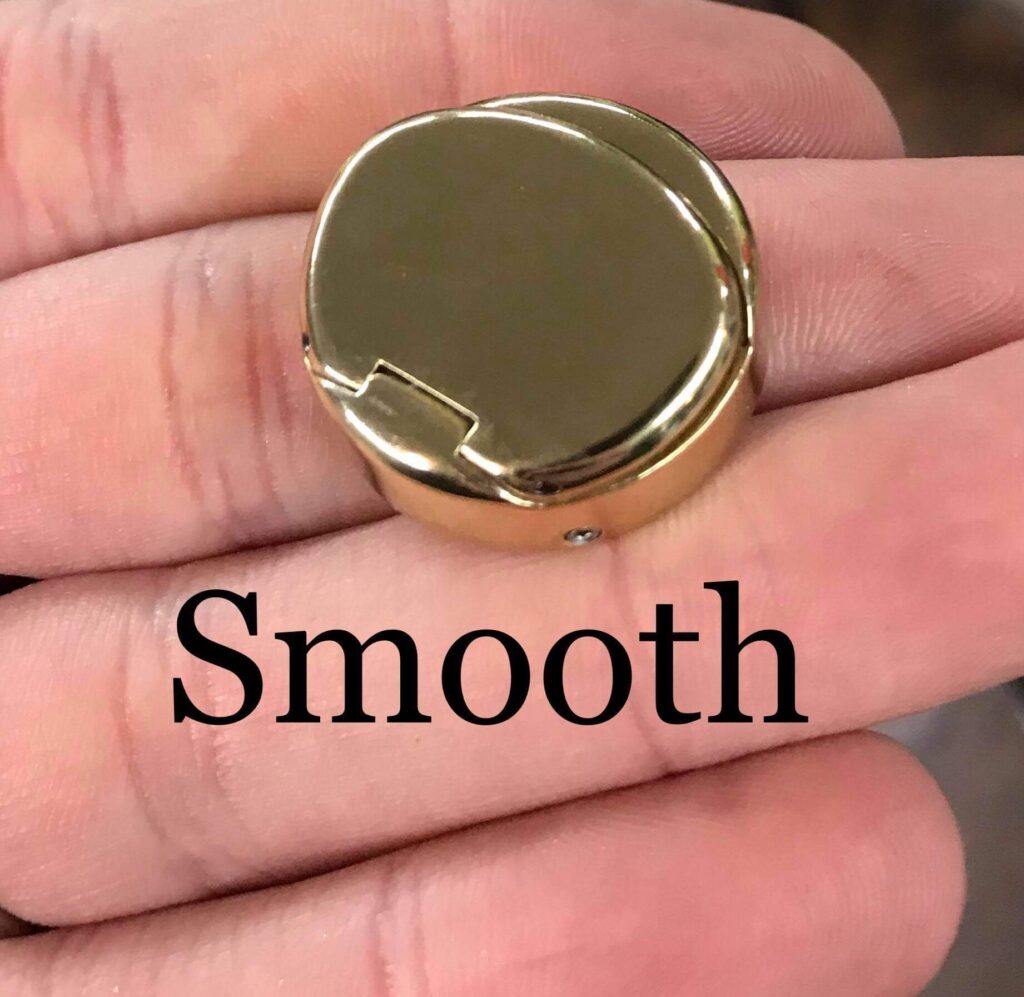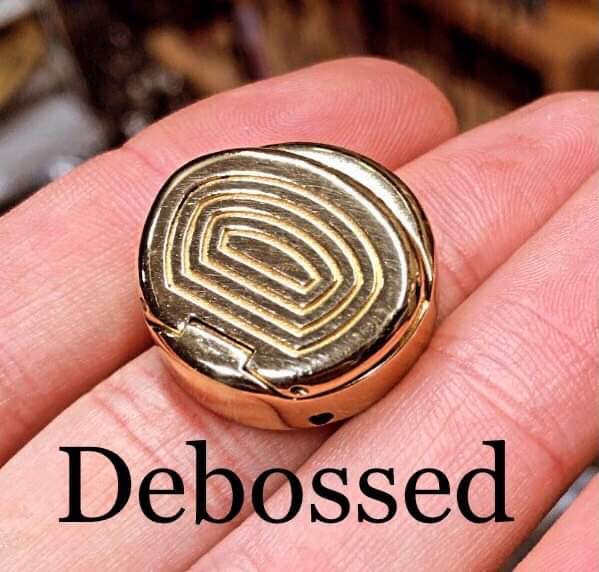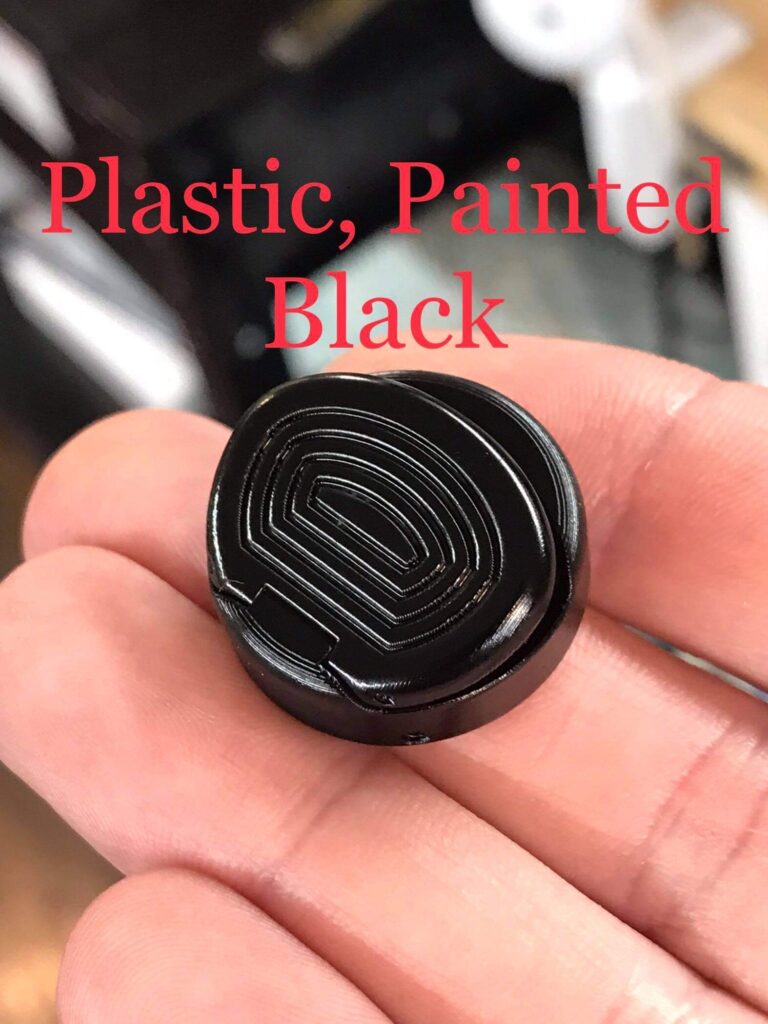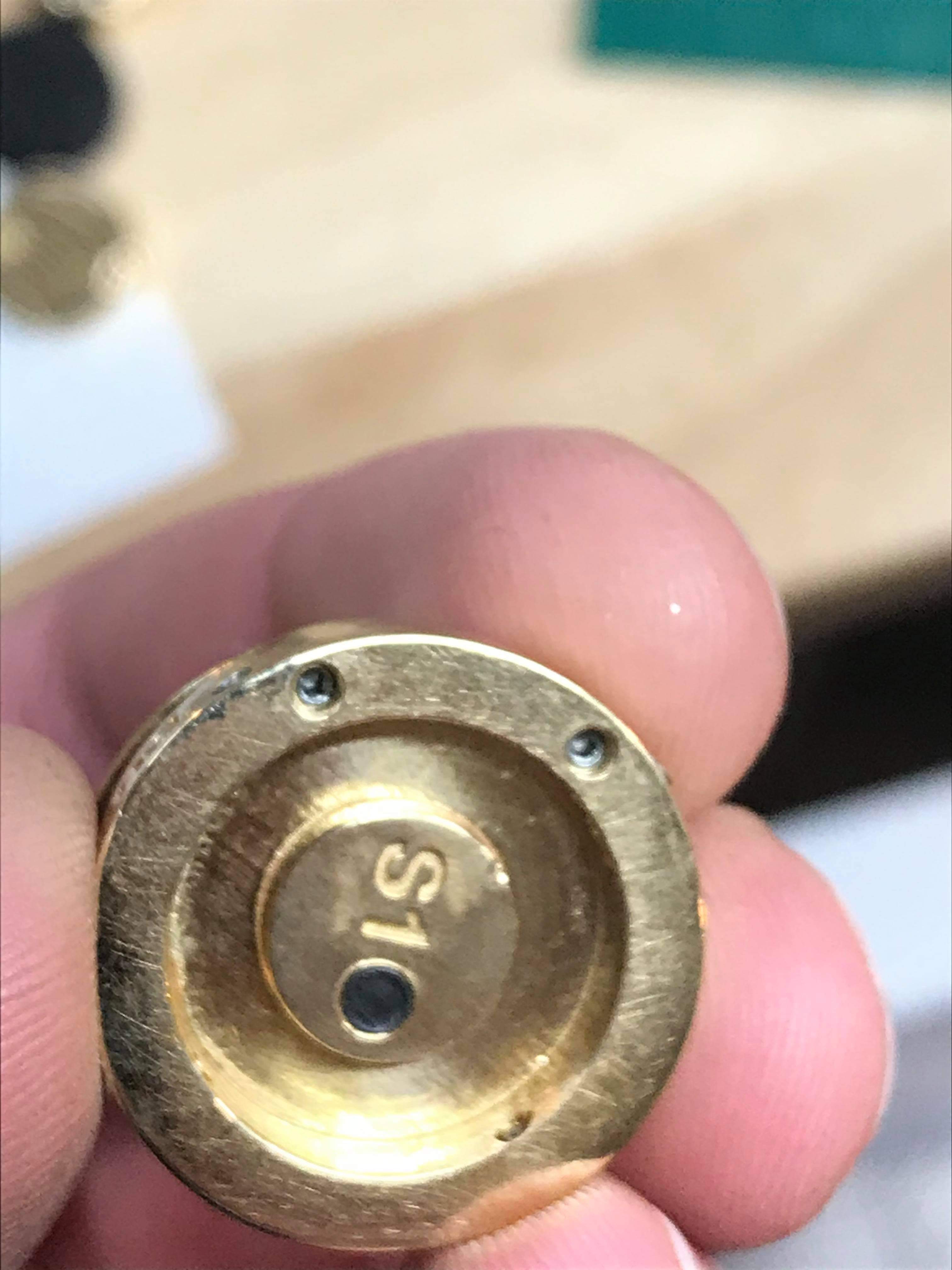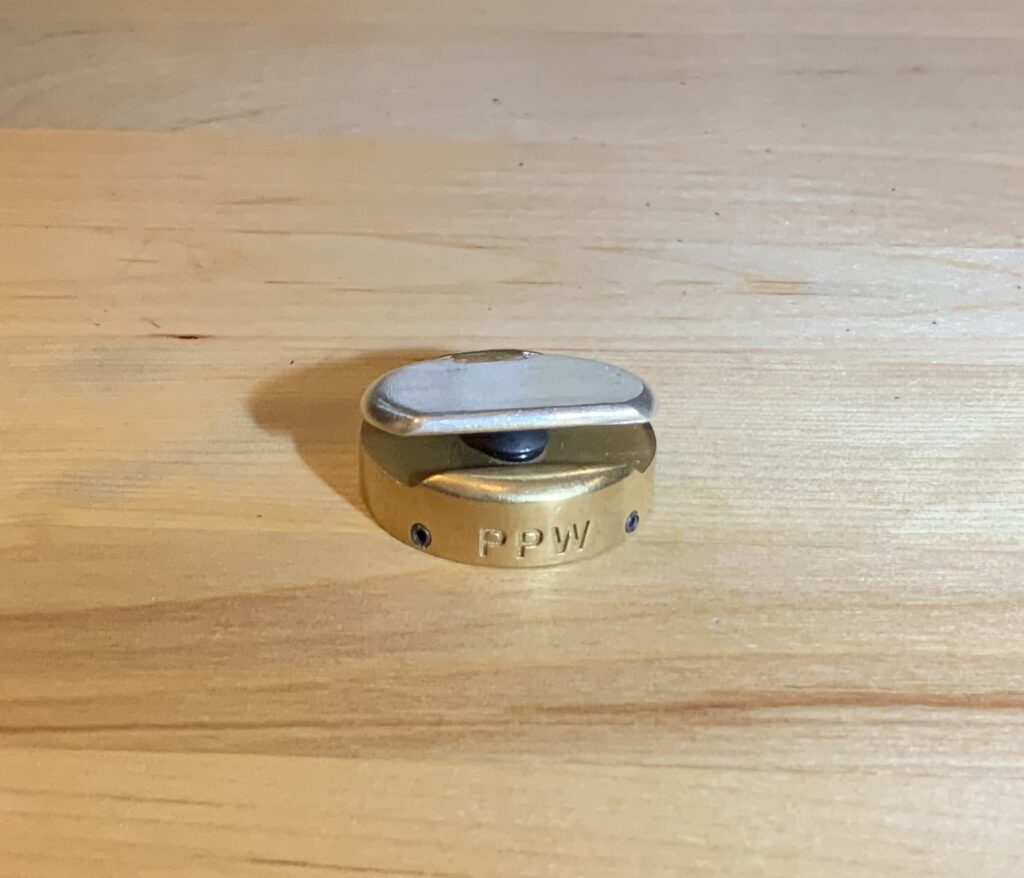
I can comfortably say, almost every saxophonist I know has had some performance related injury, or at least discomfort at some point during their career. Whether is it has temporarily (or not so temporarily) halted their performing, required regular stretching, gym work, or just occasional discomfort. This is even more prevalent on soprano, where especially right hand/arm/thumb discomfort is extremely common. For a long time people have been finding ways to make soprano more comfortable for the right hand: Jerry Luedders added a cord to his Buffet High G SDA Soprano so he could hook a neck strap onto it, Harvey Pittel created a brace that was also used by James Rötter that rests against the diaphragm, now available as “Harvey Pittel’s Hand-Eze,” that replaces the thumb rest with one that allows an adjustable fixed position brace to stabilize and support the saxophone, the Finnish company ErgoBrass makes the ErgoSax that attaches to the neck strap hook, and can be used sitting or standing and has a spring to allow a bit more freedom of movement, Ton Kooiman invented the Forza Thumb Rest, there are right hand thumb rests with a “wing” like the Ishimori Type II Thumb Hook, etc. With all of these products available (and the armchair saxophonists online replying that they just use an old Ray Hyman neck strap on their bare skin and have never had any hand or neck pain) it is no surprise that something that can adapt for the angle/position of our left thumb would finally be invented. This is where the Peak Performance Woodwinds Adjustable-Incline Thumb Rest enters the market.
I was very excited when I saw Will Peak’s Facebook post about his new thumb rest, so I quickly sent him a message about buying one and he was kind enough to put a 3-D printed plastic one on hold for me so I could pick it up at NASA. I was excited because, especially on soprano, I never felt completely comfortable with the thumb position as I pressed the octave key, but always disliked the other solutions I had tried. Unfortunately about a month later while practicing soprano after NASA, the thumb rest broke. Will had this happen to another one at NASA I later found out, so I think I was the only one that ended up with an original plastic one at NASA, and he had already checked in with me (though I didn’t know why at the time) about how mine was holding up. He quickly helped me get a metal version, I picked a bare brass and solid silver top ($237), he sent it out the next morning, and even worked with me on paying for it at the time which was early on at the beginning of the pandemic when so much work had been cancelled, though I should note this combo is no longer available except by special order request. In the months since then he has redesigned the plastic version twice (redesign for durability and now V.2), which was on my alto, but since has come out with a V.2 of the Incline Thumb Rest, a debossed prototype of which is now sitting on my alto.
I have put in many on my soprano since I received my Incline Thumb Rest and I can say, without a doubt, it is more comfortable than a stock thumb rest. To keep my thumb on the saxophone I don’t have to have my thumb at an odd angle, to keep my thumb in a comfortable position it doesn’t have to sit floating in the air. It has taken a few adjustments and I’m sure I will continue to adjust position as time goes on, but the biggest benefit I have found isn’t actually my increased comfort (which I would normally say is paramount), but actually the feeling of increased stability. Tools like the ErgoSax also help with stability but it is an external stabilization. Just by positioning my thumb more comfortably the saxophone itself was more stable, my technique felt more comfortable and while I can’t say it “improved” my technique, everything I was doing felt easier.
On alto with the V.2 I have gone back and forth adjusting the position, angle, height, and for now have been going back and forth between flat, using it as a very comfortable thumbrest with wonderful grooves, and to the lowest position which while I’m not quite used to yet on Alto, does seem to reduce tension, though it still feels a bit foreign since I haven’t had nearly as much practice time outside of teaching as I would like. The new curved design and the locking lid means that no matter what angle or position you find comfortable, there will not be a flat or sharp edge there, and with the locking lid, you don’t have to worry about the magnet alone to hold the lid in place.
While there will be many people that have never had any complaints with a normal thumb rest, there are an even larger number that have had pain or problems. Its invention addresses the needs of saxophonists, like ergonomic chairs, keyboards, mice, standing desks, and adjustable monitors address the needs of those that work at computers all day. Starting at $160 for bare brass, and just $60 for the plastic version, I know these are not inexpensive, but versus other saxophone accessories which others can have very strong opinions on, ergonomics is not an arguable subject, they DO matter even some people don’t have issues. A neck strap, thumb rest, riser, or any other accessory we put on our saxophone is well worth it. Especially with the narrower body of the soprano, issues of hand comfort are very important. We can consider the price of ergonomic computer equipment, like a chair. There is a reason, despite the price, that more than 7 million Herman Miller Aeron chairs have been sold; being comfortable while working is incredibly important to a making a happy and productive worker. If your workplace is a saxophone, especially a soprano saxophone, you won’t be disappointed with this purchase.
Will is making a great product (in addition to the bell rings, which I have used for years), is a great player/tech, and a really nice guy. I held off on the publication of this for a while because Will was excited to show me the new design, and because then life happens, but I hope everyone gives this a try, especially if you’ve had any left hand thumb pain.

